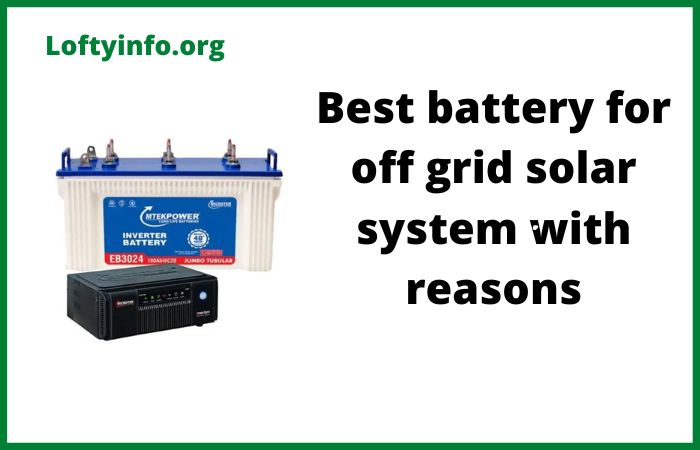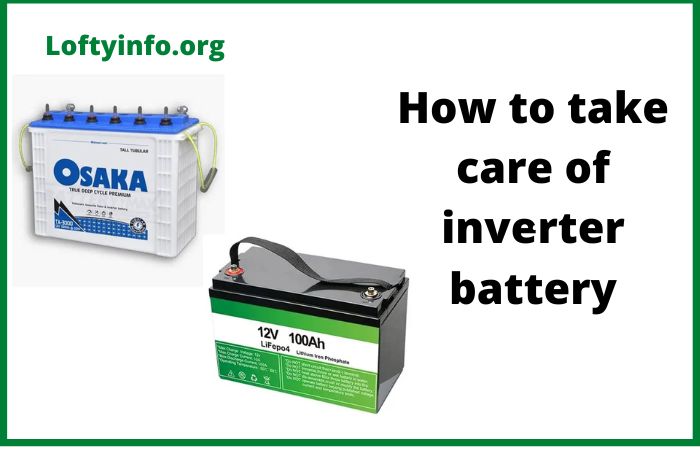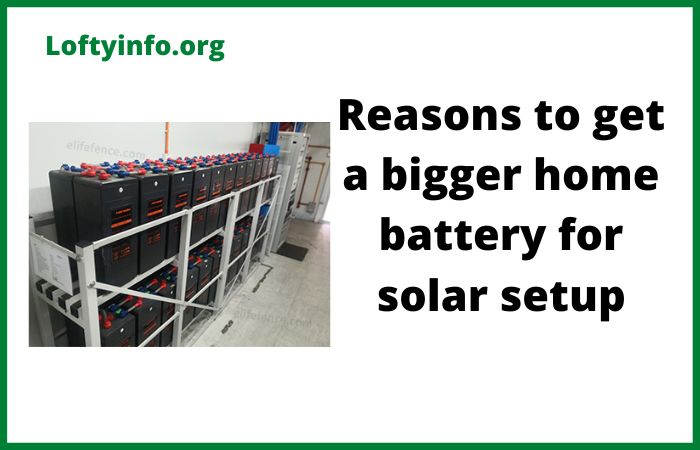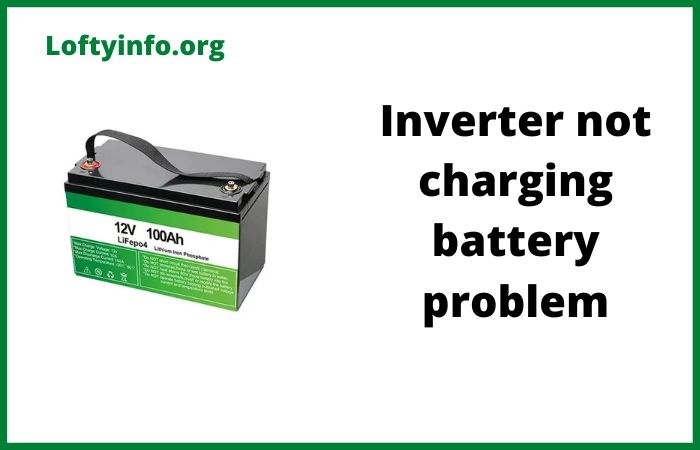Best Battery for Off Grid Solar System
Selecting the right battery for your off grid solar system determines whether you enjoy reliable power or face constant frustrations with capacity limitations and premature replacements.
Off grid living demands energy storage solutions that perform consistently through varying weather conditions and usage patterns while providing sufficient capacity to power your home during extended cloudy periods.
The battery you choose represents one of the largest investments in your solar system and directly impacts your daily quality of life.
Among the various battery technologies available today lithium iron phosphate batteries have emerged as the superior choice for off grid solar applications.
These advanced energy storage systems outperform traditional lead acid batteries and even other lithium chemistries in ways that matter most to off grid homeowners.
Understanding why lithium iron phosphate technology dominates the off grid market helps you make an informed investment decision that serves your energy needs for decades to come.
Why Lithium Iron Phosphate Battery Is Best For Off Grid Solar System
1) Exceptional Cycle Life Reduces Long-Term Costs
Lithium iron phosphate batteries deliver between 3000 and 10000 charge-discharge cycles depending on depth of discharge and operating conditions.
This extraordinary lifespan translates to 10 to 20 years of daily use in typical off grid applications.
When you cycle your battery bank daily as most off grid systems do this longevity becomes the defining factor in total cost of ownership.
Compare this performance to flooded lead acid batteries that provide only 500 to 1000 cycles or sealed AGM lead acid batteries offering 600 to 1200 cycles.
You would need to replace lead acid batteries three to six times during the operational lifetime of a single lithium iron phosphate battery bank.
The initial purchase price of lithium iron phosphate runs approximately two to three times higher than lead acid alternatives but the extended cycle life means you spend significantly less over the system’s lifetime.
The mathematics becomes even more favorable when you factor in installation labor costs for battery replacements.
Each lead acid replacement requires disconnecting the old batteries hauling heavy units up or down stairs or across your property installing new batteries and disposing of toxic lead acid waste properly.
These replacement cycles consume time and money that lithium iron phosphate owners avoid entirely.
The superior cycle life also provides peace of mind knowing your energy storage system will reliably serve your household for many years without degradation concerns constantly looming over your energy planning decisions.
2) Higher Depth of Discharge Maximizes Usable Capacity
Lithium iron phosphate batteries safely discharge to 80 to 100 percent of their rated capacity without damaging the cells or significantly reducing lifespan.
This characteristic means a 10 kilowatt-hour lithium iron phosphate battery bank provides 8 to 10 kilowatt-hours of actual usable energy for your home.
You can confidently draw power from these batteries knowing you are accessing nearly all the stored energy.
Lead acid batteries suffer severe lifespan penalties when discharged beyond 50 percent of rated capacity.
Drawing a lead acid battery below this threshold causes sulfation where lead sulfate crystals form on the battery plates and permanently reduce capacity over time. To achieve 500 to 1000 cycles from lead acid batteries you must limit discharge to this 50 percent level.
This restriction means a 10 kilowatt-hour lead acid battery bank only provides 5 kilowatt-hours of usable energy before requiring recharge.
The practical implications reshape your entire system design. To store 10 kilowatt-hours of usable energy you need only 10 to 12 kilowatt-hours of lithium iron phosphate batteries but 20 kilowatt-hours of lead acid batteries.
This difference doubles the physical space requirements and increases the weight of your battery bank substantially. Lead acid batteries weigh approximately three times more than equivalent lithium iron phosphate capacity making installation more challenging and limiting mounting location options.
The ability to use nearly all rated capacity means lithium iron phosphate systems require fewer batteries for the same functional storage, reducing upfront costs and simplifying system management.
You gain flexibility in sizing your battery bank precisely to your needs without oversizing to compensate for unusable capacity trapped in the cells.
3) Superior Energy Efficiency Conserves Solar Production
Lithium iron phosphate batteries achieve round-trip efficiency of 95 to 98 percent meaning you recover 95 to 98 percent of the energy you store.
When your solar panels generate 10 kilowatt-hours and charge your lithium iron phosphate battery bank you can extract 9.5 to 9.8 kilowatt-hours back for household use. Only 2 to 5 percent of captured solar energy dissipates as heat during the charge and discharge process.
Lead acid batteries demonstrate round-trip efficiency of only 70 to 85 percent with flooded lead acid performing at the lower end and sealed AGM at the higher end.
These batteries convert 15 to 30 percent of stored energy into waste heat rather than useful electricity. In the same scenario where your panels generate 10 kilowatt-hours you only recover 7 to 8.5 kilowatt-hours from lead acid batteries.
The missing 1.5 to 3 kilowatt-hours simply vanished as heat in the charging and discharging process.
This efficiency gap compounds over time with significant consequences. An off grid home using 15 kilowatt-hours daily needs to generate approximately 15.5 kilowatt-hours with lithium iron phosphate batteries accounting for system losses.
The same home using lead acid batteries must generate 18 to 21 kilowatt-hours daily to compensate for poor battery efficiency. Meeting this higher generation requirement demands more solar panels increasing both system costs and roof space requirements.
In areas with limited sun exposure or restricted mounting areas the efficiency advantage of lithium iron phosphate can make the difference between a functional system and one that cannot meet household needs.
Every kilowatt-hour your batteries waste as heat represents expensive solar capacity you paid for but cannot use.
The superior efficiency of lithium iron phosphate maximizes the value of your solar investment by ensuring the clean energy you generate actually powers your home rather than heating your battery enclosure.
4) Minimal Maintenance Requirements Save Time and Effort
Lithium iron phosphate batteries operate as completely sealed maintenance-free units requiring no regular servicing throughout their operational life.
You install these batteries connect them to your system and they perform reliably for years without any owner intervention.
The lack of maintenance requirements frees you from time-consuming battery care routines and eliminates the costs associated with maintenance supplies.
Flooded lead acid batteries demand regular maintenance that most off grid homeowners find burdensome. These batteries require monthly water level checks and refilling with distilled water to replace moisture lost during charging.
Neglecting this maintenance causes the battery plates to become exposed to air leading to permanent damage and capacity loss. Terminal cleaning must be performed every few months to remove corrosive buildup that develops around battery connections.
Equalization charging procedures need periodic execution to balance cell voltages and reverse sulfation.
These maintenance tasks consume several hours monthly and require purchasing distilled water battery terminal cleaners and protective equipment for handling corrosive acid.
The maintenance burden extends beyond time and supplies.
Working with flooded lead acid batteries exposes you to sulfuric acid which causes severe chemical burns if spilled on skin and releases hydrogen gas during charging creating explosion risks in poorly ventilated spaces.
Proper maintenance requires safety goggles, acid-resistant gloves and adequate ventilation adding complexity to routine care procedures.
AGM sealed lead acid batteries eliminate water refilling requirements but still need terminal cleaning and equalization charging making them only partially maintenance-free.
Lithium iron phosphate batteries contain no liquid electrolyte, produce no hazardous gases during operation and require no periodic service interventions.
This hassle-free operation particularly benefits remote off grid locations where accessing batteries for maintenance proves difficult for off grid homeowners who prefer spending time enjoying their property rather than servicing batteries.
5) Stable Voltage Output Improves Appliance Performance
Lithium iron phosphate batteries maintain relatively flat voltage discharge curves meaning the voltage remains stable throughout the discharge cycle until the battery reaches very low states of charge.
Your inverter receives consistent voltage from 100 percent charge down to approximately 10 percent remaining capacity. This stable voltage delivery ensures your household appliances receive clean steady power regardless of battery charge level.
Lead acid batteries exhibit sloping voltage discharge curves where voltage drops progressively as the battery discharges.
At 100 percent charge a 12 volt lead acid battery measures approximately 12.7 volts but drops to 12.0 volts at 50 percent charge and falls to 11.5 volts or lower at the recommended discharge limit. Your inverter must work harder to convert this declining voltage into stable AC power for your home.
Some inverters struggle to operate efficiently or may shut down prematurely when input voltage drops too low even though the battery retains usable capacity.
The practical benefits of stable voltage affect your daily off grid experience. Lights maintain consistent brightness rather than dimming as batteries discharge.
Refrigerators and freezers run efficiently without the compressor struggling against voltage variations. Sensitive electronics receive the stable power they need for reliable operation.
Your inverter operates in its optimal efficiency range throughout the discharge cycle reducing energy waste and heat generation. The voltage stability also simplifies system monitoring because voltage readings accurately reflect state of charge with lithium iron phosphate batteries.
With lead acid batteries voltage provides only a rough estimate of remaining capacity requiring more sophisticated monitoring equipment to track true state of charge.
The consistent power delivery from lithium iron phosphate batteries means your off grid home functions just as reliably in the evening after a full day of battery discharge as it does in the morning with fully charged batteries.
6) Compact Size and Light Weight Simplify Installation
Lithium iron phosphate batteries pack significantly more energy into smaller lighter packages compared to lead acid alternatives.
A typical lithium iron phosphate battery provides 100 to 150 watt-hours per kilogram of weight and 250 to 400 watt-hours per liter of volume.
This energy density makes it possible to store substantial energy capacity in relatively compact battery banks that fit in standard closet basements or outdoor enclosures.
Lead acid batteries store only 30 to 50 watt-hours per kilogram and 60 to 100 watt-hours per liter. The poor energy density means lead acid battery banks occupy two to four times the physical space and weigh three to five times more than equivalent lithium iron phosphate capacity.
A 10 kilowatt-hour lithium iron phosphate battery bank weighs approximately 80 to 100 kilograms and occupies roughly one cubic meter of space.
The same capacity in flooded lead acid batteries weighs 300 to 400 kilograms and requires three to four cubic meters of space accounting for mandatory ventilation clearances around each battery.
Installation challenges multiply with heavy lead acid batteries. Moving and positioning 30 kilogram flooded lead acid batteries strains your back and requires multiple people for safe handling.
Reinforced flooring may be necessary to support concentrated weight loads especially in upper floor installations. The large footprint limits mounting location options potentially forcing you to dedicate entire rooms to battery storage.
Lithium iron phosphate batteries can often be installed by one person using basic hand tools and fit in locations impractical for lead acid banks.
Wall-mounted lithium iron phosphate systems free up floor space entirely transforming battery storage from a space-consuming necessity into an unobtrusive system component.
The compact size also reduces climate control costs because smaller battery enclosures require less heating in winter and cooling in summer to maintain optimal operating temperatures.






